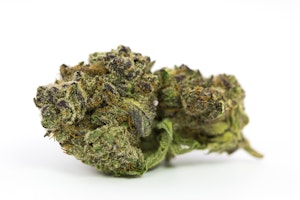
Photo By Oreon | LED
The World Of Terpenes
Learn how terpenes interact with cannabinoids, such as THC and CBD, and their potential effects.
Terpenes are an integral part of cannabis and have a significant impact on its taste, aroma, and effects on the body.
Knowing terpenes and their potential effects is a great alternative to choosing strains that are more focused on what you are looking for in your cannabis consumption experience.
What Are Terpenes?
Terpenes are a class of aromatic compounds found in various plants, including cannabis.
They are responsible for the characteristic odors and flavors of different strains of cannabis and have been shown to have a number of therapeutic effects on the body.
Over the years, scientists have studied terpenes in cannabis and have found that these compounds have a significant impact on the effect of cannabinoids, such as THC and CBD.
Terpenes & Cannabis
In cannabis, terpenes are produced by the plant’s trichomes and play a key role in the overall effects of the plant.
When combined with other cannabis compounds, such as THC and CBD, terpenes potentiate and modulate the effects of these compounds, resulting in the unique effects that different cannabis strains are known for.
While more research is needed to fully understand the role of terpenes in cannabis, it is clear that they play an important role in the effects of the plant and offer a number of potential therapeutic benefits.
Whether you are a medical cannabis patient or a recreational user, understanding the role of terpenes in cannabis can help you make more informed decisions about the strains you choose to consume.
Common Terpenes In Cannabis

Photo By Washarapol D Binyo Jundang
Each plant strain usually has a unique terpene composition; hence, different strains have different smells, tastes and effects.
Here is a brief list of the most common aromatic molecules found in marijuana plants.
Caryophyllene: This terpene is one of the most common in cannabis. Its aroma is pungent and is not exclusive to cannabis, it is also found in cloves, cinnamon and black pepper. As a fun fact, the molecule can act as a cannabinoid, similar to THC. However, before you get too excited, don’t expect a psychoactive high from this molecule. Instead, the fragrance activates cannabinoid receptors on immune cells.
Myrcene: Myrcene is a terpene found in the cannabis plant. Common in strong indica strains and is believed to have hypnotic and muscle-relaxing properties. The higher the myrcene content of a strain, the more sedative it is. Its aroma is musky and earthy. It is also often found in mango and hops.
Linalool: Linalool is a sweet, floral terpene with a strongly calming attitude. Its aroma is citrusy and lemon-like and is also found in fruit peels, rosemary and juniper.
Limonene: Limonene is a terpene commonly found in citrus fruits. In cannabis, you’ll find this cheerful aroma in strains like Lemon Skunk, OG Kush and Super Sour Diesel. Limonene has demonstrated anti-inflammatory properties and great potential against cancer cells. In addition, the compound may also have an antidepressant quality.
Humulene: Humulene has been shown to reduce inflammation and even treat pain. When combined with cannabinoids such as THC and CBD, the effects of these therapeutic compounds may be amplified.
Pinene: Pinene is a terpene with a pungent pine aroma. Pinene is a terpene that is associated with energy. Probably also associated with a concentrated, uplifting, and calming effect, pinene has the gift of inspiring focus and uplifting mood.
Terpineol: Terpineol is a relaxed and focused terpene often found in carefree strains like Skywalker OG and White Widow. Like many other terpenes on this list, this sweet-smelling molecule may have cancer-preventive properties. Its aroma is herbaceous and woody.
Delta-3-Carene: This intriguing terpene is a potent anti-inflammatory. Often found in strains of the Haze family, including Super Silver Haze, this terpene has a slow, sedative vibe. Although strains in the Haze family are often classified as sativas, strains with particularly high levels of delta-3-carene are perhaps best for those hoping to enter a relaxed state of mind.
Importance Of Terpenes
The importance of terpenes in cannabis lies in their ability to interact with cannabinoids, such as THC and CBD, to produce more complex and varied effects in the body. For example, relaxing terpenes, such as linalool, can enhance the sedative effects of THC, while energizing terpenes, such as pinene, can enhance the stimulant effects of CBD.
In addition, terpenes also have medicinal properties and can be useful in treating a variety of conditions, including anxiety, insomnia, pain, and inflammation. When choosing a marijuana strain, it is important to consider the terpene composition to get the desired experience.
Final Opinion
These are just some of the terpenes found in cannabis, and their aromas can vary depending on the strain and growing conditions. Terpenes have different medicinal attributes, and many strains of weed have a mixture of terpenes that act together.
Some terpenes have anti-inflammatory, analgesic, antidepressant, antibacterial, and antifungal properties, making them potentially useful in the treatment of a variety of medical conditions.
Herb Recommended Products:
READ MORE










